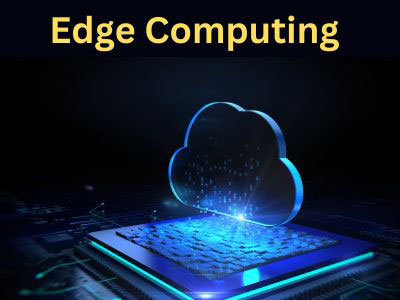Key Takeaway
Edge computing is closely tied to the 5G network. With 5G’s high-speed, low-latency capabilities, edge computing can deliver faster data processing and real-time analytics at the edge. 5G enhances edge computing by ensuring rapid communication between devices and servers, facilitating seamless data transfer and more responsive applications.
Edge computing benefits from 5G in applications like autonomous vehicles, smart cities, and industrial automation. By integrating 5G with edge computing, industries can leverage enhanced network speeds and reduced latency to optimize performance, making it a crucial component of the 5G ecosystem.
The Role of Multi-Access Edge Computing (MEC) in 5G Networks
Multi-Access Edge Computing (MEC) is a powerful extension of edge computing that integrates directly with 5G networks. MEC provides a platform for low-latency, high-bandwidth applications by bringing computing resources closer to the end user, all while utilizing the capabilities of 5G. MEC enhances the experience of users in industries such as telecommunications, healthcare, and entertainment, where rapid data processing is essential.
By offloading computing tasks to the edge of the network, MEC helps reduce congestion in the core network and lowers latency, which is critical for real-time applications. For example, in autonomous vehicles, MEC can enable near-instantaneous decision-making, ensuring safety and operational efficiency. In the context of 5G, MEC allows applications to leverage ultra-fast network speeds and massive device connectivity. This combination accelerates the adoption of smart city technologies, intelligent transportation systems, and immersive augmented reality (AR) experiences. MEC is truly a game-changer, providing the backbone for next-generation applications.

How 5G Accelerates Edge Computing Applications
The introduction of 5G is revolutionizing edge computing by addressing one of its biggest challenges—latency. With its ultra-low latency, high bandwidth, and massive connectivity capabilities, 5G is enabling edge computing to perform at its full potential.
In traditional networks, data often travels long distances to reach centralized servers for processing, which can result in delays. This lag is particularly problematic for applications like autonomous vehicles, real-time healthcare monitoring, and smart manufacturing, where even milliseconds matter. 5G solves this by allowing edge devices to communicate and process data almost instantaneously.
Imagine a factory floor where robots and sensors are connected to an edge server via 5G. These devices can process data locally, enabling real-time decision-making without relying on a cloud server. Similarly, in healthcare, wearable devices can analyze patient data on the spot and send alerts to medical professionals if immediate intervention is needed.
As an engineer, understanding how 5G enhances edge computing is essential. It requires knowledge of network architecture, edge frameworks like Kubernetes, and IoT platforms. The combination of 5G and edge computing is not just about speed; it’s about creating smarter, more responsive systems that redefine what’s possible in technology.
You May Like to Read
Edge Computing Use Cases Powered by 5G Technology
The combination of 5G and edge computing has unlocked a wide array of transformative use cases:
1. Smart Cities: Edge devices connected through 5G manage traffic systems, reduce energy consumption, and improve public safety by processing data locally in real-time.
2. Gaming: Cloud gaming services rely on 5G-powered edge servers to deliver high-quality, latency-free gaming experiences to players worldwide.
3. Retail: Edge computing and 5G enable smart checkout systems, personalized advertising, and efficient inventory management in retail stores.
4. Agriculture: 5G-powered drones and sensors process data at the edge to optimize irrigation, monitor crops, and enhance yields.
These use cases demonstrate how 5G and edge computing are reshaping industries, making processes faster, smarter, and more efficient.
Reducing Latency Through 5G and Edge Integration
Latency is a critical factor in modern applications, and the integration of 5G with edge computing addresses this challenge effectively. 5G’s ultra-low latency ensures data travels at lightning speeds, while edge computing processes data close to its source, eliminating delays associated with cloud processing.
For instance, in industrial automation, real-time decision-making is essential for maintaining efficiency and safety. By combining 5G’s speed with edge computing’s localized processing, factories can monitor and control systems instantly, avoiding costly downtimes.
Another example is telemedicine. Real-time data analysis and communication are critical for diagnosing and treating patients remotely. The 5G-edge combo ensures that vital health data is processed and shared without delay, improving patient outcomes.
By reducing latency, this integration is enabling technologies like AR, VR, and IoT to reach their full potential, revolutionizing how we interact with the digital world.
Future Prospects of 5G and Edge Synergy
The future of 5G and edge computing is promising, with endless possibilities for innovation. As 5G networks continue to expand, edge computing will play an even greater role in supporting emerging technologies.
One area of growth is artificial intelligence (AI). With edge computing, AI models can be deployed closer to users, enabling real-time predictions and automation. Combined with 5G, this will transform industries like manufacturing, transportation, and healthcare.
Another trend is the rise of private 5G networks. These networks, combined with edge computing, provide businesses with secure, low-latency environments for deploying tailored applications. For instance, factories can use private 5G and edge systems to optimize operations without relying on public networks.
As these technologies evolve, the synergy between 5G and edge computing will continue to drive innovation, making industries more agile, efficient, and connected.
Conclusion
The integration of edge computing and 5G represents a paradigm shift in connectivity and data processing. Together, they enable real-time applications, enhance efficiency, and unlock new use cases across industries.
For businesses and developers, embracing this synergy is not just an opportunity—it’s a necessity to stay ahead in an increasingly connected world. As 5G networks expand and edge computing technologies mature, we can expect a future defined by smarter systems, seamless experiences, and unprecedented innovations.
